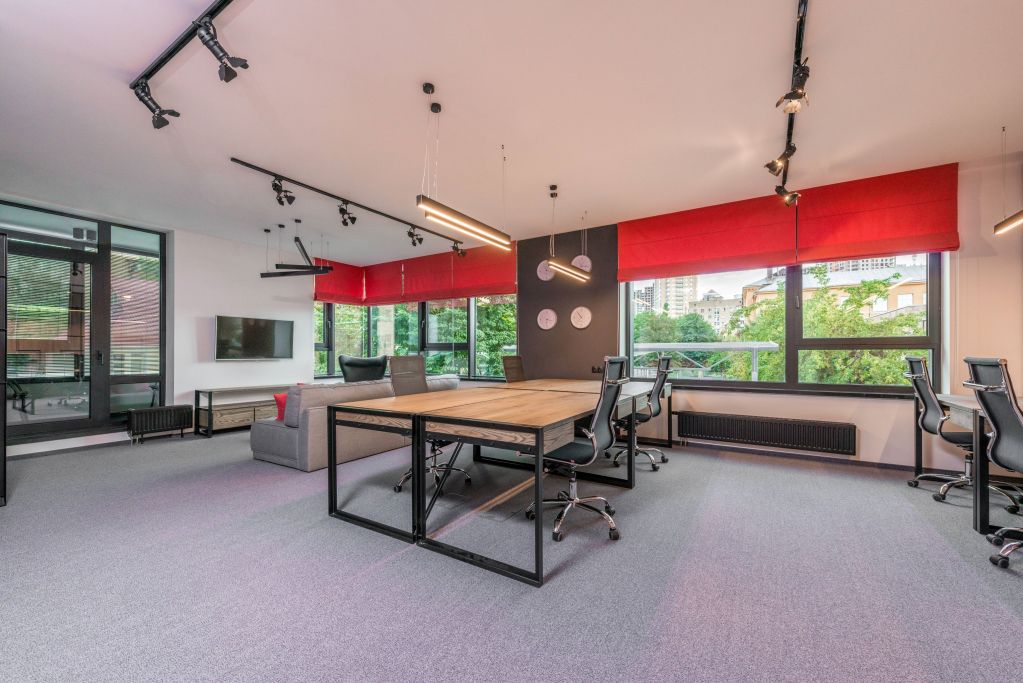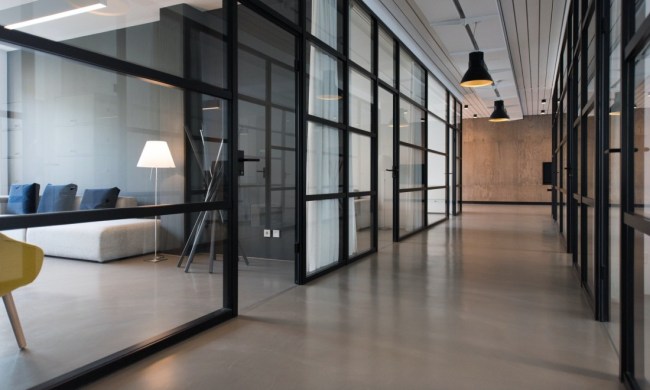When running your business, no matter the size, you want the right conditions in place, so your employees have all the resources they need, and productivity can be at its best. Your office lighting requirements are an important piece of the puzzle.
Meeting your workplace lighting requirements makes things easier for everyone in a standard office, factory, or warehouse. So do a review of your workplace to see if you need to make any changes to your lighting.

Rely on natural light whenever possible
The right lighting can lead to more work getting done. It can also mean you and your team have healthier eyesight, because good lighting can reduce eyestrain from glares and shadows.
Allowing as much natural light as possible to enter your office area from the outside is a good and healthy thing. In order to do so, keep the blinds and any other window coverings open during daytime hours. You can close the blinds or turn them down for a few hours if too much sunlight is coming through.
If you’re concerned that natural light in the summer may increase your AC costs due to the heat, put your fears aside. You’re actually saving money by not relying on overhead and other office lights to be on constantly throughout the day.
When you’re building a new office or if you have the flexibility with your ceiling type, consider skylights. These allow more natural light to work its way into the workplace during the day. Skylights help you cut down on artificial light and bring in natural light.

How to meet workplace lighting requirements
Position employees and their desks properly
Depending on your office layout, you may have a fair number of desks next to one another, with or without dividers. Align the desks so that light emanating from the ceiling fixtures is parallel to the line of sight each worker has.
In the same manner, ensure your workers themselves are positioned properly. Since you need some degree of lighting from the inside, position your employees so that they get direct light, but not in a way that is harmful or distracting. Move their computers into a position where screen glare and shadows from the natural light or overhead light aren’t an issue.
Ensure that those who use table lamps on their desks have them sitting in a way that gives them the additional illumination they need, but doesn’t cast a glare on their computer or surface area. This could cause issues while using their computers or doing other work tasks.
Use light diffusers on computers
Because most office workers spend a good deal of their days on computers and looking at screens, they need some protection from this blue light. Provide your employees with light diffusers for their computer screens. These handy devices help minimize the amount of direct light and glare they have to deal with when working at their computers.
Have emergency lighting available
There is always the possibility of the lights going out due to an internal power failure, storm, or other reason. As such, ensure there is emergency lighting that illuminates walking paths and emergency exits if workers must leave the premises without normal office lighting. Have signage showing where the emergency lighting is and how best to evacuate the office.
Conserve energy when you can
Have you driven by large office buildings and seen a number of lights on at night? While some of those buildings may have employees in them 24 hours a day or people working in the evenings, many may not. People may have left office lights on with the purpose to burn throughout the night. If you’re looking to save money on your office power bill, make sure the last person out in your workplace turns off the lights. To ensure lights go off, you could set your lights on a timer.
Office lighting requirements
Know your workplace lighting requirements, such as placing your employees’ desks and your workers themselves property and taking advantage of natural light that comes into your workspace. Provide your workers with what is necessary for office lighting, and chances are their productivity may increase.
If you’re not familiar with the Occupational Safety and Health Administration’s lighting guidelines, take the time to review them. Not only will you be meeting your compliance needs, but you’ll also be ensuring the health and safety of your employees.


